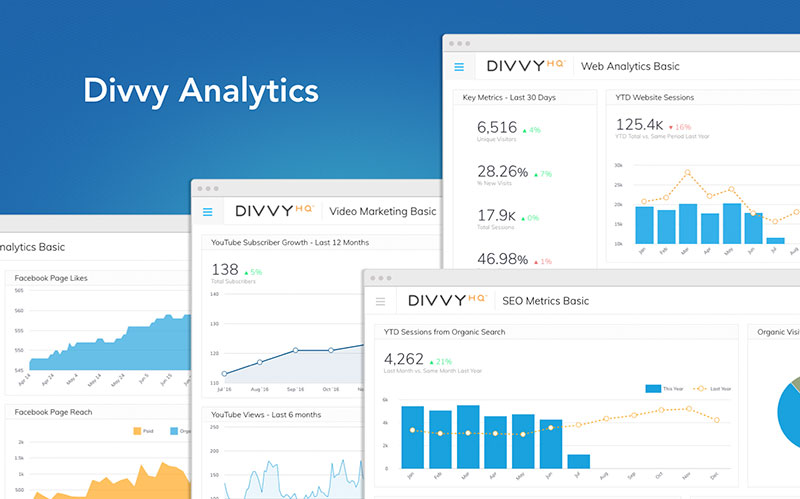As an enterprise content team, your output largely takes the form of digital assets. These content pieces are how you attract, engage, and convert audiences. Thus, you want to have clarity around if they’re actually doing those things. So, what’s the best way to measure digital asset performance? And why does it matter? Let’s find out!
What are digital assets?
Digital assets in content marketing describe anything that exists only in a digital format and create value for an organization. Digital assets can belong to any part of a company, but we’ll focus on those owned by content marketing. Broadly, that includes text, graphics, audio, video, and animations.
The Most Used Digital Assets in Content Marketing
In looking at what digital assets content marketers create, those include:
- Website content
- Ebooks
- White papers
- Infographics
- Videos
- Research reports
- Presentations
- Blog posts
- Webinars
All these formats function in different ways. Some focus on lead generation, such as ebooks and whitepapers. These formats have a lot of value for your organization because they require a form fill and opt-in that you can use to nurture and communicate with the prospect. Ebook registration volume grew 15.5 percent in 2021, accounting for 43.3 percent of all content downloads, according to a content consumption and demand report.
Others are educational in tone, while others are promotional. Your content strategy should include all the digital assets you’ll create, the parameters for each, how you’ll use them, and how you’ll measure their performance.
What Are the Metrics That Relate to Digital Asset Performance?
To understand asset performance, you need to know what to measure. These metrics are the most critical for your team:
Website Traffic
For a digital asset to perform, users must arrive on your website. They can do this in many ways — organic search, direct, referrals from social media or third-party sites, email, and paid advertising.
You want to look at the source to determine what channels work well and which pages have the most views. High views can result from:
- High organic ranking (first page on Google)
- Paid ads
- Social posts with considerable engagement and clicks
- Content featured in emails
You’ll need to calculate the traffic they bring to your site with caveats. Did a digital asset perform well because it was relevant to the audience? Or was it just a byproduct of paid promotion of the content? Those questions you can answer by looking at conversions.
Content Conversions
Can you accurately attribute conversions to content marketing and digital assets? It’s not an easy process, and many B2B marketers struggle here, which impacts their ability to demonstrate content marketing ROI (return on investment). The CMI B2B content marketing survey revealed that the majority (51 percent) are unsure if they can!
So, how do you do it consistently? It starts with having accurate content analytics. You want to be able to trace a prospect’s journey with content to a conversion. Some digital asset conversions are easy, such as ebooks, whitepapers, webinars, or other form-supported content. You can quantify those conversions easy breezy.
However, when you receive a conversion on your website for contact us, start a trial, or schedule a demo, it may be less clear how they got there. To measure these conversions, you’ll want to use a tracking code for all your CTAs and buttons. By doing this, you can attribute that conversion to the last piece of content consumed, whether it’s a blog post, video, or email message.
Engagement
Another metric to determine digital asset performance is engagement. You want to know if your content gets the audience’s attention. There are a few metrics to look at here:
- Time on page: You can surmise that those that stay on a page for longer periods find the content more engaging.
- Bounce rate: If an asset has a high bounce rate, it could indicate that the content isn’t appealing. That’s not always the case, so get some context around this (e.g., are bounces high because it’s a conversion page?).
- Social media engagement: Engagement is a standard metric for social media. It measures how people interact with a post (e.g., like, comment, share, or click). If content has high engagement on social media, it’s driving buzz and traffic.
SEO Rankings
Monitoring and measuring organic rankings also provide digital asset performance insights. You optimize many of your assets to rank well to drive traffic and conversions. An asset that places on the first page and receives lots of organic clicks is one that’s performing very well. Continue to record SEO rankings every 30 days to identify post types, keywords, and topics that perform the best.
Paid Ad Metrics
The last set of metrics concerns paid ad tactics. That includes SEM (search engine marketing), social media ads, display ads, and other digital advertising options. At the end of a campaign, you’ll know the impressions, clicks, and conversions from the ad. A click isn’t a conversion. Those only register when the lead becomes qualified, so you’ll need to refer to the tracking code to understand the actual return on paid ads.
Now that you know what to measure, how do you do it consistently and efficiently?
Measuring Digital Asset Performance with the Right Tools
It’s all about data, and it lives in many places. Everything website-related lives in Google Analytics. Social media metrics are found in the platforms themselves or through a social media management tool. Email data resides in your email marketing system. You collect paid ad data from Google, social media sites, or third-party ad sellers.
It would be ideal to aggregate this into one dashboard and pull reports to measure everything holistically. You can do that with a content marketing platform that uses APIs to pull analytics. That’s how we designed Divvy, ensuring it would simplify metric analysis for busy enterprise teams. See how it works today by scheduling a Divvy Analytics demo.

